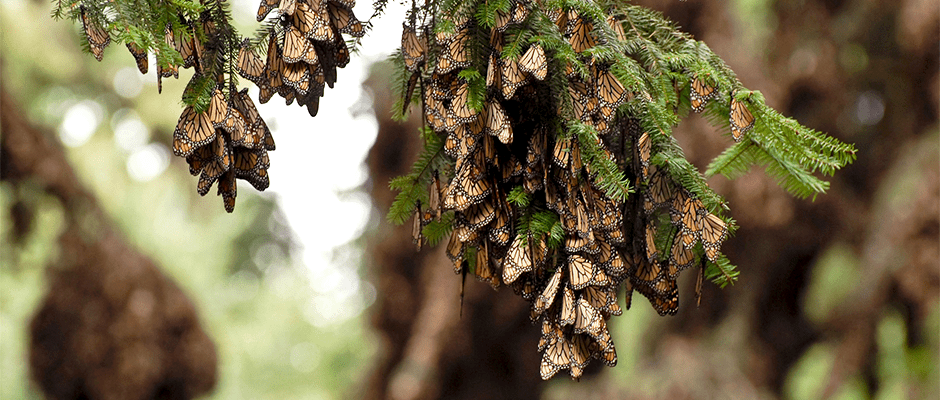Share this article
Recolonizing Florida monarchs face steep decline
Monarch butterflies (Danaus plexippus) stopping over in Florida while traveling north have declined 80 percent since 2005, according to a new study.
The monarchs stop in Florida on their spring journey from Mexico, taking advantage of the milkweed growth during an optimal time. But the research shows the declining number of monarchs in Florida parallel the declining number of the butterflies in their Mexico wintering grounds.
The study, published in the Journal of Natural History, was a culmination of 37 years of data on the butterflies in Florida, which was started by monarch expert Lincoln Brower, who died earlier this year. Brower is the lead author on the study.
“This was Lincoln’s brainchild, a study that had been going on over the years,” said Jaret Daniels, a co-author of the study and program director and associate curator of the Florida Museum of Natural History’s McGuire Center for Lepidoptera and Biodiversity. “A large number of individuals participated in this to keep it going. It takes a lot of energy, and we’re really glad to get that culmination of the study out there, and I think it’s an important time with the monarch review going through the ESA.”
The team studied the butterflies on a plot of land where private landowners allowed researchers access to their pastures. The biologists found that while their numbers dropped significantly, the butterflies seemed to continue to travel and stopover around the same time every year. That raises concerns, Daniels said, that under climate change, the plants’ springtime schedules will shift while butterflies stick to their historical migration timing.
Daniels also said the study shows the importance of the presence of milkweed species in Florida, particularly pinewood milkweed, which grows right when the monarchs are stopping over. “They certainly need many milkweed species,” Daniels said. “But this is one of, if not the most important spring milkweed for recolonization. It’s vegetative when they’re coming back in February and March. It’s the most critical in the early season for milkweed.”
Daniels said managers and conservationists should begin thinking about maximizing breeding habitat, especially in nontraditional landscapes like roadways and pasturelands, which appears anecdotally to be beneficial in Florida. He points to shrinking milkweed populations, largely due to a boost in the use of glyphosate, an herbicide that’s lethal to milkweed and other factors driving a loss of breeding habitat.
“I think we need to look at how all landscapes are managed to better conserve milkweed populations for monarchs,” he said, “and we can’t focus on conservation lands without other landscapes that are as important — and increasingly more important — than conservation lands,” he said.
But while the study validates the decline in numbers of monarchs in their overwintering sites, Daniels said, the future doesn’t have to be so bleak.
“It’s a good outcome to motivate partners and motivate agencies,” he said. “Alarm bells are going off, and oftentimes until you get that published and show the data, agencies and organizations are not going to move. As devastating as the outcome is, it’s an important one to move the needle.”
Header Image: Monarch butterflies in Florida have declined 80 percent since 2005. ©Kristen Grace/Florida Museum








